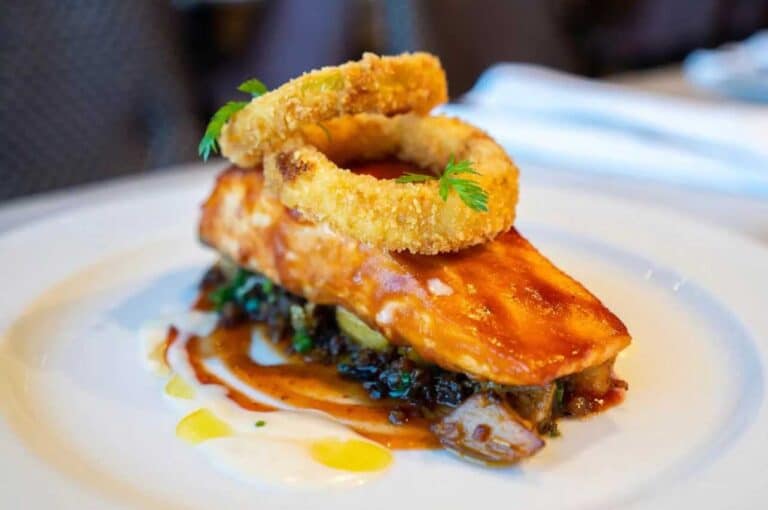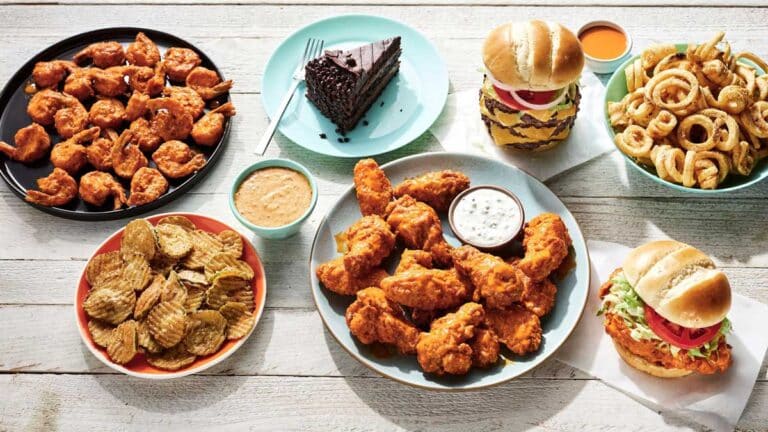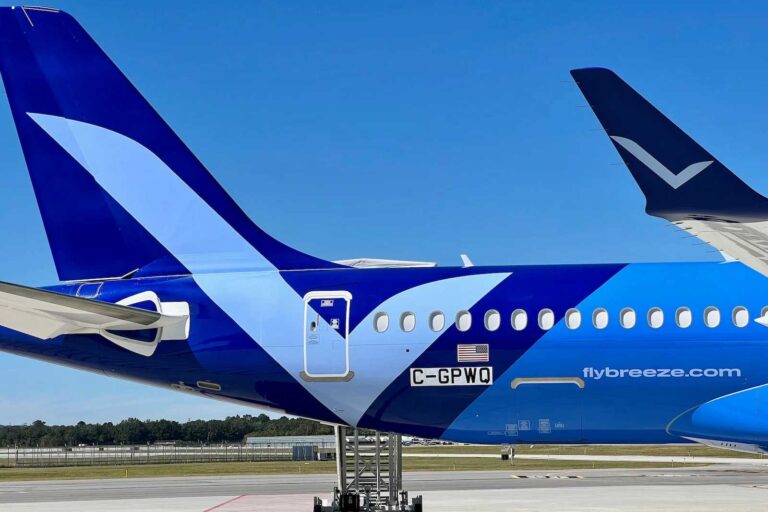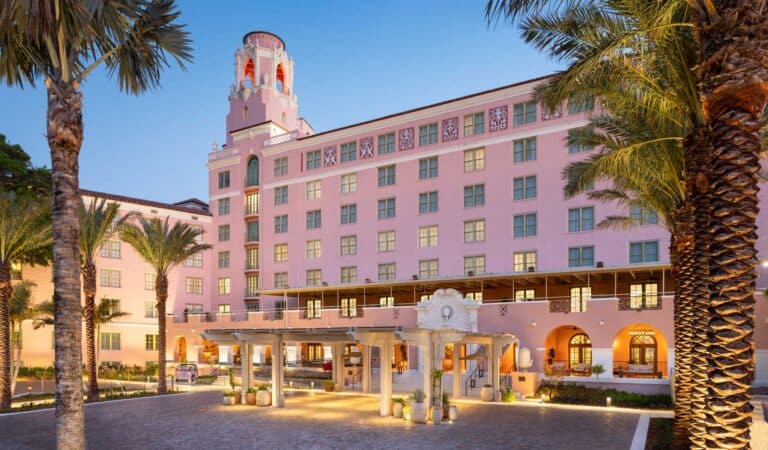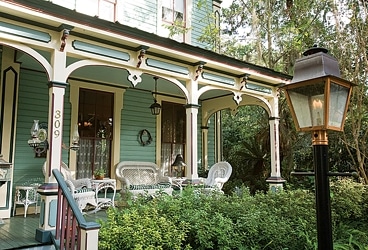
Come to Gainesville on a Saturday in fall, and you will see the Gator Nation in a blue- and-orange sea of tailgating bliss. A football game is about to start in the “swamp” (aka Ben Hill Griffin Stadium), and alums have made the pilgrimage back to this northeastern town for kickoff.
Joe and Cindy Montalto were once part of that annual reunion. University of Florida grads who left to launch careers in Texas, the couple found their alma mater town so attractive, they returned years later with the bold idea to gentrify a rundown neighborhood on the southeast edge of downtown that seemed to have eluded city officials. “When we arrived in 1990, we bought the Baird Mansion, a 1885 Victorian home that we converted to a bed-and-breakfast. We were the first sign of civilization [among derelicts and less ambitious students who occupied these historic homes], and we had a steep hill to climb to change the area dynamics,” recalls Joe. In fact, the word on the street was “what fool would buy these houses,” he adds with a chuckle. But other visionaries followed, and soon more old beauties were converted into B&Bs. Inspired, the Montaltos began buying and renovating neighboring cottages to complement their main house, creating the Magnolia Plantation complex.

Fast-forward to 2010. Banners proclaiming the area the “Historic Southeast Bed & Breakfast District” now hang from old-fashioned street lamps on S.E. Seventh Street. “Families [also] started to move in, and now it’s a ‘Donna Reed’ neighborhood,” says Cindy as she crosses the street bearing gifts for her neighbors’ two adopted Asian daughters.
Back in 1990, those same neighbors, Jean and Rick Chance, were living in Orlando, but “We wanted community,” says Jean as she rocks her daughter on the front-porch swing. “From this downtown location, we can walk to the grocery store, and we see people we know all the time,” she says, adding, “we also like old houses—the ultimate in recycling and renewing.” The Chance family home is a cheery, yellow-and-white corner house surrounded by a picket fence, miniature hedges and sprawling oaks. An American flag is displayed on the porch, and a historic plaque that reads “Anderson House, 1910” is mounted near the front door. The image is small-town Americana, but in Gainesville, it comes with a wealth of diversity fueled by higher learning. Says Jean, “We like the cultural richness found at the university’s performing-arts center and in the faith communities [that serve the multicultural student body] here; there’s even a Chinese Christian church where I take my daughter to learn about her culture.”
More Historic Charm
A few blocks north across East University Avenue, which together with Main Street divides the city’s grid into N.E., N.W., S.E., S.W., is the Northeast Historic District, a 63-block neighborhood also known as the Duck Pond. Here, granddaddy oaks, a duck pond, of course, and architectural styles from the 1880s to late 1930s give the area character. And homes start at $250,000 for a bungalow but can fetch $750,000 for a Victorian with gingerbread detailing. J. Parrish of Coldwell Banker M.M. Parrish Realtors, grew up here and lives in a Federalist-style bungalow. “My granddad and great-granddad built a lot of the houses here,” he says.
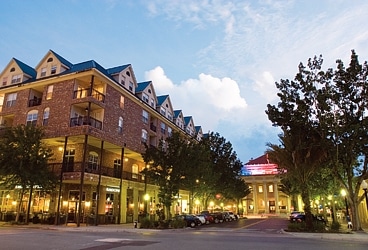
Proximity to downtown draws professionals who seek out shows at the Hippodrome State Theatre (circa 1911) as well as the many restaurants. “I see downtown as a destination where you can walk, play, dine. It’s lively at night; we even have guys pulling rickshaws,” he adds. Lining its brick streets are restaurants like Harry’s (New Orleans-style food) and the always-packed Dragonfy Sushi Bar. Inside the mix is two- thirds students and one-third parents and professionals, but in Gainesville, you never know who you’ll sit next to: a scout for the Philadelphia Eagles (UF won the 2008 national championship), a grad student or a surgeon from Shands medical center.
Study and Work
The average age of Gainesville’s 265,000 residents hovers around 26, as students come and go. There’s no doubt that UF is the machine that drives the local economy with its 50,000 students, but Gainesville is not a one-horse town. There’s Santa Fe College, with another 17,000 students, a planetarium, a teaching zoo and a performing-arts center under construction. Among the big employers are Nationwide and Tower Hill Insurance Group, the engineering firm CH2M Hill, bio- tech firm RTI Biologics and an Enterprise rental-car call center. Gainesville also has an impressive medical community that includes the VA Medical Center and Shands, a UF teaching hospital considered one of the best in the nation.
Go West
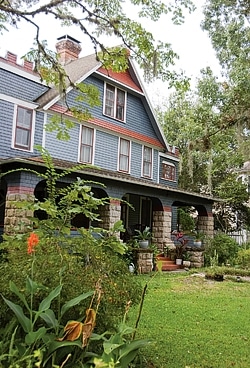
Travel beyond Gainesville’s center, and you come upon sprawling, tree-filled subdivisions, rural land, state parks and charming towns like Alachua, High Springs and Micanopy. Tucked in one of the sub- divisions is Sam Ullman’s home. A graduate of UF who practiced law in Miami, Ullman and his wife retired to Gainesville where he is now an adjunct professor. “We’re both healthy and active and wanted a place where there’s a lot going on, and university towns have that,” he explains. “But besides the culture and sporting events, we love to hike and be outdoors.” The Ullmans often trek the trails in Paynes Prairie Preserve State Park where Sam, an amateur photographer, finds plenty of alligators (UF’s mascot), birds and bison.
The farther west you go, especially crossing I-75, residents tend to be part of the business community rather than academia, and the neighborhoods are more at affluent. The Town of Tioga has a New Urbanism design. Imagine a yellow school bus dropping off backpack-toting kids who walk down tree-lined streets with two-story houses sporting porches with rocking chairs, picket fences and back alleys. Homes here start around $250,000 for a three-bedroom, 2½ bath, two-story town house. And $495,000 will buy you a five-bedroom, four-bath, two-story home.
Another noteworthy community is Haile Plantation, just five miles west of Gainesville and set in a hardwood forest. Well planned with a golf course and village center—public square, restaurants, stores—this development has some 2,700 homes, town houses, condos and apartments nestled in numerous neighborhoods. You can also find a two-bedroom, two-bath cottage for $169,000 or a four-bedroom, four-bath for $499,900. It’s also home to one of Gainesville’s most revered residents: UF head football coach Urban Meyer, who enjoys the privacy of Fairhaven, one of the few gated neighborhoods here, with only six lots. Go Gators!

